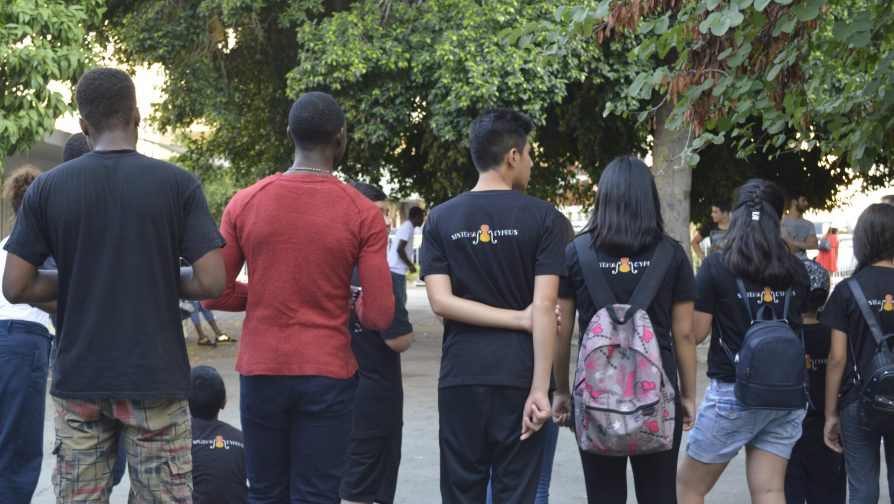Educational programmes – both formal and non-formal – give vital support to the two-way process of integration.
Earlier this month, refugee children in Nicosia gave a cultural performance together with children from a local school, unified by their shared love of music and dance. The children of the nearby Faneromeni Primary School teamed up with the unaccompanied asylum-seeking teenage boys who live at the shelter in the old walled city that is run by the Hope for Children charity organization. The result was a stunning collaboration that took away cultural boundaries, and created joy and friendship among the participants and the audience alike.
The children from the school and the shelter have been meeting and practicing music together under the guidance of Sistema Cyprus, the local chapter of the global movement bringing music education to disadvantaged communities. On this occasion the Home for Hope shelter for unaccompanied asylum-seeking boys in Nicosia was celebrating its fourth anniversary since its inauguration.

Sistema Cyprus brings music education closer to refugee and other disadvantaged children. ©UNHCR/Cyprus
The children sang traditional African songs while guiding their enchanted audience through the halls of the shelter’s facilities. In the courtyard there was a drumming circle with some twenty boys and their teachers pounding rhythmically in unison on upturned plastic buckets with wooden drumsticks. The audience was then led through the halls with more choral melodies to the sports area where the older boys performed a theatrical work that told stories of moving from isolation into forming friendships. Later an impressive dance-off inspired the youngest enthusiasts to spontaneously jump up and join in. At the end, several of the boys who reside at the shelter bravely read out their own poetry, some in English, another in Greek, and another in his native French, with members of the audience both young and old visibly moved by their courage and candour.
“Cyprus is a small country that has a big story,” one boy read.
“Above all Cyprus offers peace, education and health. I am grateful to be here in Cyprus.
I miss my brothers and my sisters.
I am learning Greek.
I dream of going to university after I finish my high school here.”
Becoming a refugee as a teenager is one of the most difficult periods in life to experience displacement. To integrate oneself into a new society and to build a whole new life from scratch at this formative period of life is arguably the most challenging of all. And yet, half of the world’s refugees are children. Events such as the one at the shelter, and educational programmes – both formal and non-formal – give vital support to the two-way process of integration.
Education is also the key in giving refugee children a chance of regaining their sense of self, and of a future. Participation in various types of educational programmes can foster social cohesion, address psychosocial needs, and offer a stable and safe environment for those who need it most. Education increases opportunities for self-reliance and provides a sense of purpose and continuity. What is more, educated children and youth stand a greater chance of becoming adults who can participate effectively in civic life.
Children forced to flee not only lose their childhood and all their connections with home, but are often separated from, or lose their families entirely. For those who have surviving family members, and whose whereabouts are known, family reunification is the highest priority. However, they frequently remain separated for prolonged periods or indefinitely, due to policies and practices that delay or block family reunification. Prolonged family separation has its most dramatic impacts on children.
As of December 2017, the statistics tell us that 220 unaccompanied and separated children applied for asylum in 2016, and another 221 in 2017. These children are housed in various state-run and charity-run shelters in Nicosia, Larnaca and Limassol.
Μοιράσου το στο Facebook Μοιράσου το στο Twitter